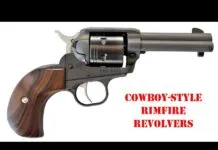Recently, at one of his favorite shops, a Gun Tests rater saw that one of his friends, a 70-year-old shooter still going strong, was looking for a “long-range” rifle. Long-range rifle shooting seems to be quite popular. We don’t necessarily mean Camp Perry-type shooting, but ordinary shooters wishing to fire their rifles at distant targets and hit the target more often than not. With a wide range of 6.5 Creedmoor ammunition and the introduction of nine new rifles from a single maker in this caliber, we feel that the 6.5 Creedmoor is likely to remain popular for many years. The cartridge is touted as highly accurate, with low recoil, and enough velocity to consistently kill deer-sized game cleanly with a well-placed shot. The 6.5 Creedmoor also offers long-range efficiency with less component expense for handloads, not to mention lower recoil than the 308 Winchester or 7mm Remington Magnum.

Because of the friend’s interest, we elected to test two new rifles in 6.5 Creedmoor and a third in another midrange offering, the 6.5 Precision Rifle Cartridge, introduced by Hornady. The two “Creeds” were both Savages. The first was the Axis II XP Stainless Bolt-Action Rifle with Scope 57289 in 6.5 Creedmoor. The Savage Axis II is the newest development of the Savage Axis line, a package gun. Package guns are simply affordable rifles supplied with scope rings and bases and a rifle scope. The buyer saves considerable amounts of money by purchasing the package versus purchasing each component separately. The rifle will have been mechanically bore-sighted by the manufacturer. In general, these rifles offer good value and save both time and money compared to obtaining and putting together your own package.

The second was a Savage 110 Apex Storm XP 57344 in 6.5 Creedmoor, substantially more expensive than the Axis. The Savage 110 differs considerably from the Savage Axis rifle. The receiver of the Axis is closed and easier to machine, while the Savage 110 is more traditional. A locking lug in the stock attaches to the Axis receiver, while the Savage 110 locking lug is sandwiched between the barrel and the action. The 110 action has more leverage and primary extraction seems better, although the practical difference may be difficult to prove.

Though the 6.5 Creedmoor is increasingly popular, the 6.5 PRC may become a viable cartridge for many users. The 6.5 PRC seems unlikely to be chambered in anything but bolt-action rifles, and we felt this a good opportunity to test a rifle we have not yet put through the grueling Gun Testsprocedure, the Mauser M18. This rifle came chambered in 6.5 PRC, allowing us to gauge the difference in accuracy, power, and recoil between this cartridge and the 6.5 Creedmoor. The rifle was fired with the Hornady 6.5 PRC Match load, one of only two available, both manufactured by Hornady. Each box of 20 6.5 PRC rounds cost $31 from SportmansWarehouse.com.

There are also those who flatly state the 6.5 Creedmoor will do nothing the ancient 6.5x55mm round will not do, so we added a rifle chambered in the latter cartridge to give us some historical perspective. There are a few current rifles chambered for this cartridge, but we found an original Mauser rifle, manufactured in 1895, chambered for the 6.5x55mm Swedish, also known as the 6.5x55mm Swedish Mauser, and sometimes called the 6.5x55mm Mauser. The round first appeared in 1891, according to Cartridges of The World’s 16th Edition. We are not collectors per se, but we like testing viable hunting rifles to see if the new stuff gives any better performance than the oldies. A collector may turn up his nose at the humble sporterized Mauser, but we found it to be a great light rifle for woods hunting.
How We Tested
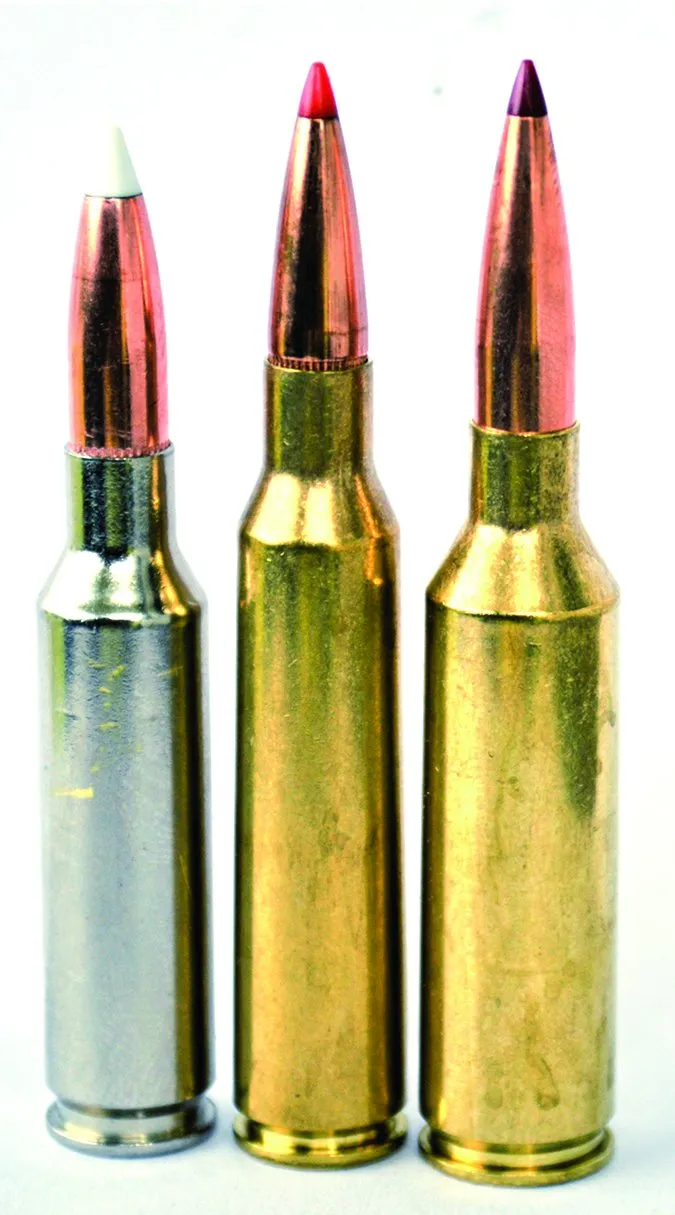
All four rifles were fired from a solid brenchrest position, putting three-shot groups on targets at 100 yards with each load. We all fired each rifle in offhand fire at 50 yards, firing 20 rounds from each rifle, as a test of offhand handling and snap shots. We used three types of ammunition in the 6.5 Creedmoor rifles. These included the Black Hills Gold 147-grain ELD, Federal 140-grain Non Typical soft points, and Hornady’s 143-grain ELDs. During the initial firing of the Creedmoors, we began with the Federal 140-grain load. Our sole 6.5 PRC round was the Hornady Match 143-grain ELD-X. There is also a 147-grain load. We used two loads in testing the 6.5x55mm Mauser, a Fiocchi 140-grain SST and the Hornady Superformance 140-grain SST.
6.5 PRC Range Data
| Hornady Match 143-gr. ELD-X 81621 | Mauser M18 |
| Average velocity | 2960 fps |
| Muzzle energy | 2782 ft.-lbs. |
| Small group | 0.6 in. |
| Average group | 0.8 in. |
If you match the game to the cartridge and remember that the primary component of taking game is shot placement, the 6.5 Creedmoor will serve well. The cartridge has been used in long-range competition for over a decade. The raters enjoyed firing the 6.5 Creedmoor and found it both pleasant and accurate. The cartridge features a flat trajectory. The rifles tested may not take full advantage of this gem of a cartridge at long range, but up to at least 300 yards, they are minute-of-deer accurate. The trajectory is equal to that of a number of cartridges that kick much harder. As for velocity, the 6.5 Creedmoor has plenty, from 2700 to 2900 fps with standard loads. The lowest velocity recorded was 2650 fps with the 143-grain bullet. We should note that the PR guys have been working overtime to promote the cartridge. The fact is, much of what they are saying is true, and while there are other calibers that will do the same job and perhaps a few that are even better, modern rifles and loads make the case for the 6.5 Creedmoor as everyone’s midrange cartridge.
6.5x55mm Swedish Range Data
| Fiocchi Extreme 140-gr. SST Polymer Tip | Mauser Sporterized |
| Average velocity | 2423 fps |
| Muzzle energy | 1824 ft.-lbs. |
| Small group | 3.5 in. |
| Average group | 4.5 in. |
| Hornady Superformance 140-gr. SST Polymer Tip 85507 | |
| Average velocity | 2590 fps |
| Muzzle energy | 2085 ft.-lbs. |
| Small group | 3 in. |
| Average group | 4 in. |
But there are many loyal fans of the 6.5x55mm Swede, a 6.5mm cartridge that is respected for both accuracy and killing power. The 6.5x55mm was designed to produce a disabling wound at long range. It offered full penetration and light recoil and became a popular game cartridge. The best explanation of the difference between the two — the Creedmoor and the Swede — is that the 6.5x55mm is a low-pressure cartridge for long-action rifles, while the 6.5 Creedmoor is a high-pressure cartridge for short-action rifles. We realize users of the Ruger 77 in 6.5×55 may load it to higher pressures, but our assessment is valid based on military Mauser rifles, which considerably outnumber commercial rifles. One of our raters likened the argument to a comparison between the 30-06 Springfield and the 308 Winchester. You may burn more powder for more velocity in the long action, but what is the real gain?
6.5 Creedmoor Range Data
| Black Hills Gold 147-gr. ELD | Savage Axis II XP | Savage 110 Storm |
| Average velocity | 2650 fps | 2679 fps |
| Muzzle energy | 2291 ft.-lbs. | 2342 ft.-lbs. |
| Small group | 2 in. | 0.9 in. |
| Average group | 2.3 in. | 1.2 in. |
| Federal Non Typical 140-gr. 65CDT140 Soft Point | ||
| Average velocity | 2702 fps | 2733 fps |
| Muzzle energy | 2269 ft.-lbs. | 2321 ft.-lbs. |
| Small group | 1.8 in. | 1 in. |
| Average group | 2.3 in. | 1.5 in. |
| Hornady ELD 143-gr. 81499 | ||
| Average velocity | 2690 fps | 2740 fps |
| Muzzle energy | 2297 ft.-lbs. | 2383 ft.-lbs. |
| Small group | 2 in. | 1.1 in. |
| Average group | 2.4 in. | 1.6 in. |
| For accuracy, we fired three-shot groups from a benchrest firing position at a distance of 100 yards. We recorded velocities with an RCBS Ammomaster Chronograph. Ammo sources — 6.5 Creedmoor: Black Hills Gold ELD-M 147-grain pointed polymer at TargetSportsUSA.com $41/20 at; Federal Non Typical 140-grain soft point; $21/20 at MidwayUSA.com; Hornady ELD-X 143-grain pointed polymer tip 81499, $28/20 VenturaMunitions.com. 6.5x55mm Swedish: Fiocchi 140-grain SST, $21/20, VenturaMunitions.com. Hornady Superformance SST 140-grain SST 85507, $37/20 at MidwayUSA.com. 6.5 PRC: Hornady ELD-X 143-grain 81621, $32/20 at SportsmansOutdoorSuperstore.com. | ||
While the 6.5 Creedmoor is similar in performance to some older cartridges, the older rounds may have short necks or other drawbacks. The 6.5 Creedmoor uses modern rifling twist and powder development to make for good performance. The 6.5 PRC is an improvement over older cartridges — and the 6.5 Creedmoor. The 6.5 PRC bests the 6.5 Creedmoor by perhaps 250 fps in velocity. On our chronograph, the 143-grain 6.5 PRC loads in the M18 ran 2960 fps compared to 2690 fps and 2740 fps in the two Savages, or 270 fps and 220 fps, respectively, or about 250 fps.
When a cartridge is introduced, we want to know the “why” of its development and what it is good for. We think relatively few shooters will be able to utilize the advantages of the 6.5 PRC. It is powerful, but the 6.5 Creedmoor is powerful enough for most North American game and offers modest recoil for match shooters and youths in the hunting field. There is an advantage with the 6.5 PRC over the other 6.5s at 400 yards, if this matters. The 6.5 Creedmoor, we believe, with the balance and accuracy demonstrated, is the better ballistic choice for most hunters. But in these rifles, which round would shine brightest?
Custom Mauser 6.5x55mm Swedish, $255
We don’t grade this rifle here, but we think it’s useful to cover it as a reference for the other bolt actions.
This rifle is a rare find. While many ex-military rifles were cut up and sporterized during the past hundred years, in many cases not only the rifles’ collector value, but also their shooting value, was ruined. Bedding and rigidity were destroyed, and the resulting rifles were inaccurate, although they accounted for many deer at short range. On the other end of the spectrum, military-style rifles were sometimes expertly modified into truly useful hunting rifles. This rifle is one of those.
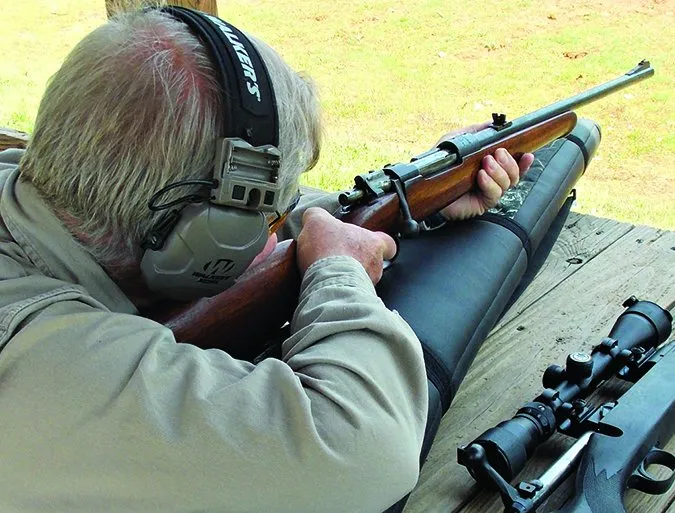
It features a nicely turned out stock with a true cheek rest and a semi-Schnabel forend. Perhaps it was a big-name maker of the day that supplied this stock, but we do not know for certain, as there were no maker marks. While it has the look of a Fajen, they were widely copied.
The rifle was manufactured in 1895. While not as strong as the later Mauser 98, this Mauser 95 was plenty strong for the 6.5x55mm cartridge. The action is smooth and movement with the controlled-feed action excellent. The straight rifle bolt has been turned down, once a common operation. It is easier to use well than it seems it would be, comparable to factory bolt handles. The Swede was the fastest and smoothest rifle in off hand fire during extraction, but the cock on closing action slowed us somewhat. In the end, the Savage Axis and Savage 110 were not as fast to operate, although it was close. The Mauser M18 was much slower.
The Swede’s barrel has been shortened to 18.5 inches, or perhaps this was an original carbine? A set of American-style sights has replaced the original military sights. These sights proved properly regulated for 50 yards. However, we had to learn to line up the front post in the rear notch and disregard the long walls of the rear sight, otherwise we fired high. Firing 20 rounds off hand was smooth going. Once we acclimated to the rifle’s cock-on-closing bolt, we found the rifle to be fast in action, delivering its shots in the center of the 50-yard target with open sights. Fired off a bench rest at 100 yards, the fixed sights did not live up to the rifle’s legendary prowess, but the results were not terrible. Taking time to aim carefully and using shooting glasses, not to mention a solid rest, we were able to produce credible groups. The Hornady loading put three bullets into 3.0 inches for the best effort, with most groups around 4.0 inches.
As for ballistic performance, the shortest rifle barrel tested did not give a competitive performance in relation to the 6.5 Creedmoor. Recoil, however, was the lightest of the test.
Our Team Said: The 6.5x55mm is an accurate, friendly, and light-kicking cartridge. While a neat rifle in most ways, this rifle isn’t competitive with the modern scoped rifles. It would be viable for thin-skinned game out to 100 yards for those with good-enough eyesight to use the iron sights. This rifle would also be an excellent youth rifle, we feel.
Savage Axis II XP Stainless Bolt-Action Rifle with Scope 57289 6.5 Creedmoor, $400
GUN TESTS GRADE: B+
The Savage is an excellent buy, a credible and accurate rifle for hunting. While it isn’t as accurate as the other two scoped rifles, it is accurate enough for hunting to 200 yards or more. The stock treatment is superior, we felt, to the more expensive Mauser. We like the rifle’s handling and find it to be a credible choice. We would save a few more weeks to buy the Apex.

| ACTION TYPE | Bolt, push feed, 2 lugs, 90-degree lift |
| OVERALL LENGTH | 43.9 in. |
| HEIGHT | 4.5 in. |
| HEIGHT AS TESTED | 6.9 in. |
| WEIGHT UNLOADED | 7.5 lbs. |
| WEIGHT LOADED | 7.7 lbs. |
| BARREL LENGTH | 22 in. |
| BARREL FINISH | Stainless steel |
| STOCK | Synthetic |
| STOCK BUTTPAD | Rubber |
| STOCK LENGTH OF PULL | 13.2 in. |
| STOCK SLING ATTACHMENTS | 2 |
| TRIGGER PULL WEIGHT | 3 lbs., adjustable |
| TRIGGER STYLE | Single stage |
| TRIGGER GUARD MATERIAL | Synthetic |
| SAFETY | Two position |
| MAGAZINE | 4-rd. detachable, steel |
| MAGAZINE RELEASE | Ambidextrous, front of magazine |
| BOLT RELEASE | Receiver latch |
| SIGHTS | Weaver 3-9×40 |
| WARRANTY | 1 year |
| TELEPHONE | (800) 370-0708 |
| WEBSITE | SavageArms.com |
| MADE IN | USA |

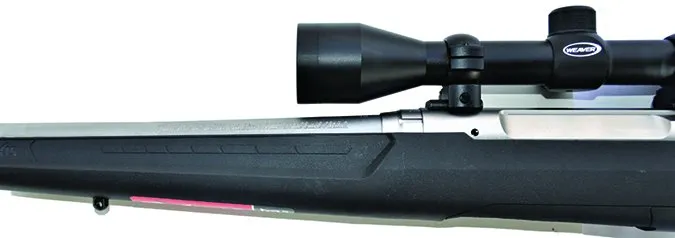
This was a recent retail price at BudsGunShop.com without shipping and FFL transaction fees. While many use these budget guns as their main hunting rifles, other shooters keep these as backup rifles to more expensive or highly developed hunting rifles. This rifle and the Savage 110 were included as examples of package guns to gauge their performance in the new 6.5 Creedmoor caliber. We suspected that the gilt-edged accuracy found in more expensive rifles in which the 6.5 Creedmoor built its reputation might not exist in the package guns, but just the same, we expected relatively good performance compared to a 308 Winchester Axis rifle.
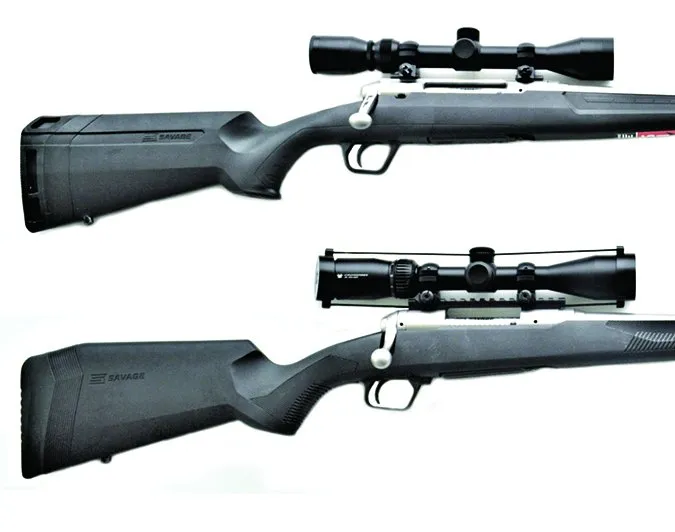
The rifle arrived in a cardboard box with a gun lock and the bolt and magazine packed separately. After assembling the rifle, we found a modern bolt action with interesting features. The stock is considerably changed from the bland-by-comparison Axis I. The forend features long longitudinal grooves that offer a good gripping surface. The rear of the stock is stylishly designed and incorporates a thick rubber recoil pad.
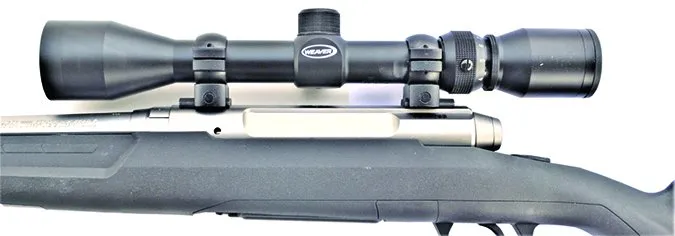
The grip section is nicely pebbled with a well-defined stop at the butt cap to stabilize the firing hand. The rifle features a tang-mounted safety that is pressed forward to move to the Fire position. The stock wrist is a bit thin but useful for most hand sizes. The bolt is smooth in operation, and the uplift isnt difficult. The magazine is easily removed for loading. Loading and inserting a magazine is easier for most of us than reaching over a scope to load an internal magazine. The stainless-steel receiver, bolt, and barrel are nicely finished with no discernible flaws.
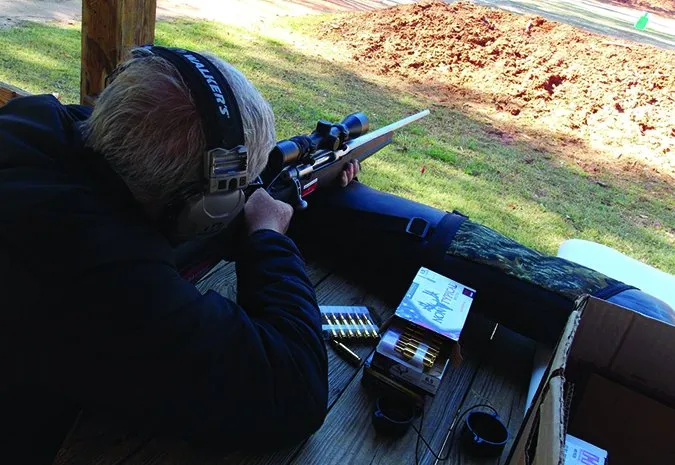
The supplied scope is a Weaver 3-9x40mm. The 3-9x40mm scope is the most common package-gun scope, and the most common in use on economy hunting rifles. This scope features a magnification ring that isn’t difficult to adjust but which maintains its setting. The elevation and windage turrets are easily adjusted. The rifle is factory boresighted. We did not test these rifles as target guns but rather as hunting rifles, which means we were looking for a balance of weight, accuracy, and handling. Oddly, the four-round magazine, the same used in the Savage 110, would only accept three cartridges when first loaded. That is what we use for accuracy testing, but we wished to load five rounds, or 4+1, for the 20-round offhand firing segment. After three loads, it began holding four rounds. Odd, but not a deal-killer.
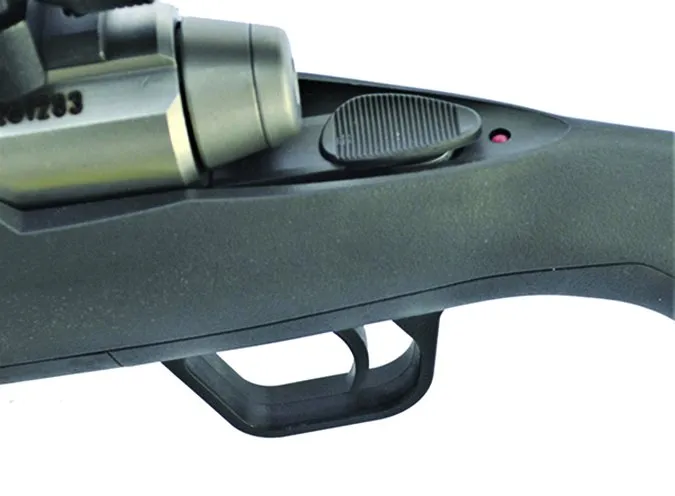
Happily, the bore-sighted rifle was perfectly sighted in for this load. The first three shots fired landed exactly where the crosshairs were put. The rifle exhibited a good standard of accuracy for an affordable package gun, producing 2-inch groups on demand with the Black Hills load, slightly shading the others with a 1.5-inch 100-yard group. The 147-grain load struck 3 inches above the 140-grain loads at 100 yards.
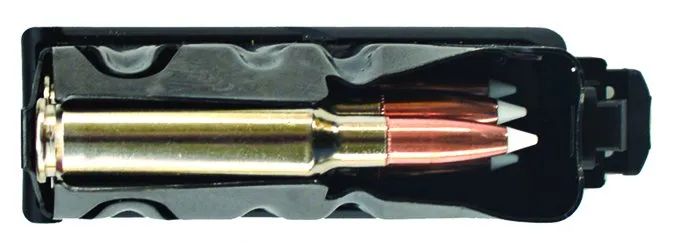
Our Team Said: We like the Savage Axis II. It is a friendly rifle with no obvious faults. The action wasn’t as smooth as the other rifles, but it is useful. Feeding is flawless. The trigger is easily adjusted and offers a crisp break. The tang-mounted safety is positive in operation. This isn’t the rifle to deliver a 0.75-inch group at 100 yards, but it is clearly accurate enough for hunting medium game to at least 200 yards. The 6.5 Creedmoor isn’t a hard kicker but this rifle kicks more than the Savage 110, a slightly heavier rifle. For the money, this is a good choice.
Savage 110 Apex Storm XP 57344 6.5 Creedmoor, $605
GUN TESTS GRADE: A- (BEST BUY)
The Savage Axis proved accurate, reliable, and fast handling. We like the three-position safety and adjustable length of pull. The Vortex scope is a credible optic.

| ACTION TYPE | Bolt, push feed, 2 lugs, 90-degree lift; matte-stainless steel |
| OVERALL LENGTH | 41 to 44.5 in. |
| HEIGHT | 4.5 in. |
| HEIGHT AS TESTED | 7 in. |
| WEIGHT UNLOADED | 7.5 lbs. |
| WEIGHT LOADED | 7.66 lbs. |
| BARREL LENGTH | 24 in.; 1:8 twist |
| BARREL FINISH | Matte-finish stainless steel |
| STOCK | Black synthetic sporter, aluminum bedding |
| STOCK BUTTPAD | Rubber |
| STOCK LENGTH OF PULL | 12.75 to 13.75 in. |
| STOCK SLING ATTACHMENTS | 2 |
| TRIGGER PULL WEIGHT | 3 lbs., adjustable AccuTrigger |
| TRIGGER STYLE | Single stage |
| TRIGGER GUARD MATERIAL | Synthetic |
| SAFETY | Three position, tang mounted |
| MAGAZINE | 4-rd. detachable, steel |
| MAGAZINE RELEASE | Ambidextrous in front of magazine |
| BOLT RELEASE | Receiver latch |
| SIGHTS | Vortex Crossfire 3-9×40; EGW 0 MOA rail |
| WARRANTY | 1 year |
| TELEPHONE | (800) 370-0708 |
| WEBSITE | SavageArms.com |
| MADE IN | USA |

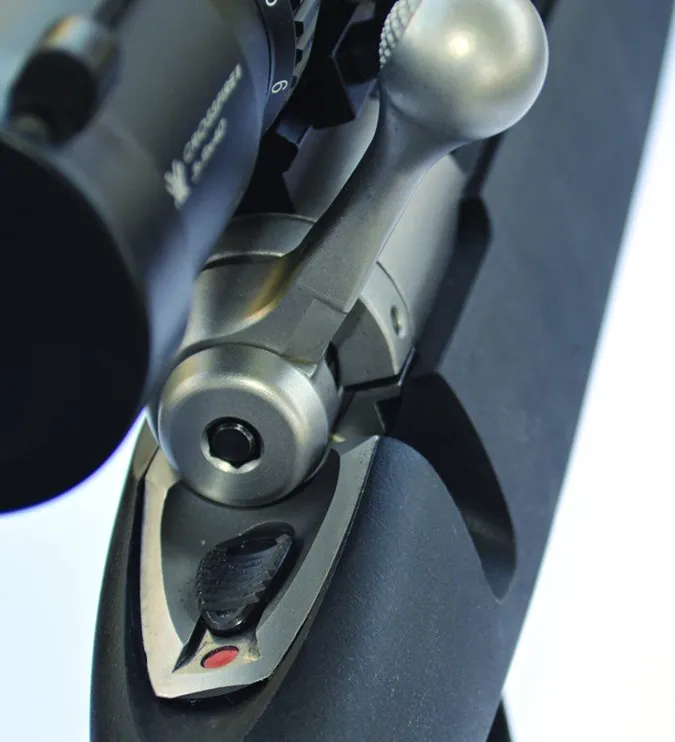
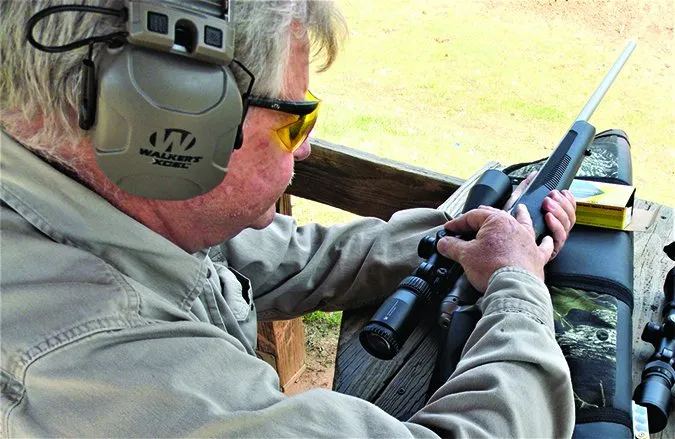
This was a recent price at BudsGunShop.com. The rifle weighs 0.6 ounces more than the Axis, which isn’t much and stock design probably accounts for the difference in recoil more so than the added weight. Recoil was lighter, however, with this rifle. Length of pull may be adjusted by a stock insert on the buttpad. We really like the three-position safety. While it is tang mounted like the Axis, the Axis safety does not lock the bolt when on safe. The Savage 110 does lock the bolt. The middle position locks the trigger but not the bolt and the final position is fire.
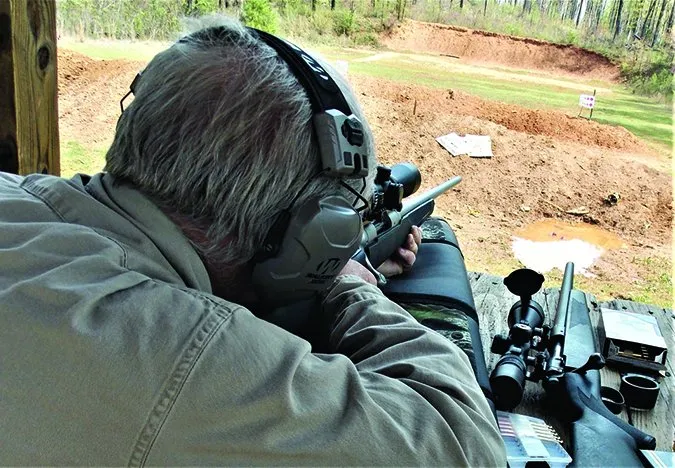
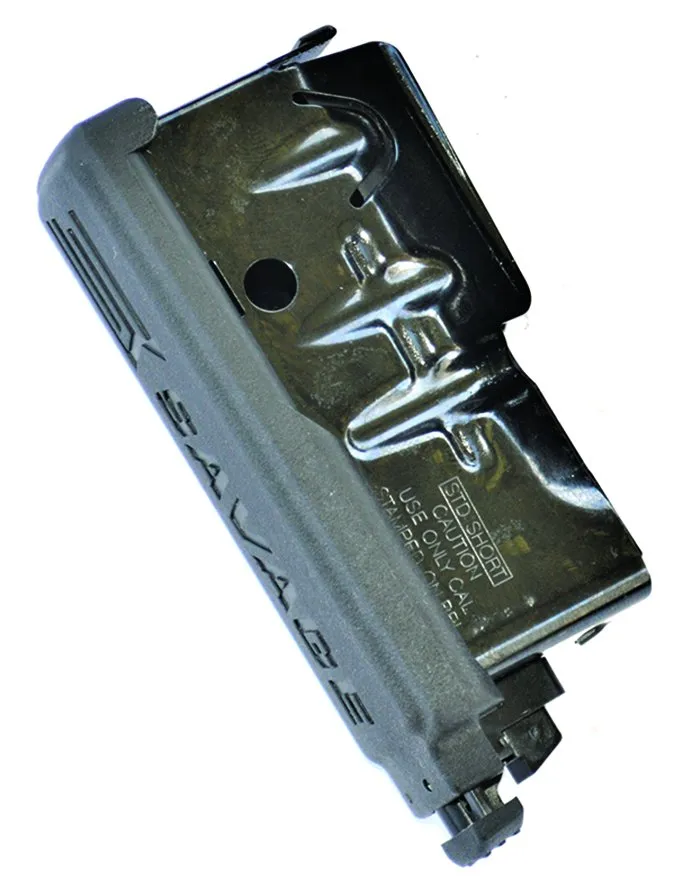
The Savage 110 features a Vortex Crossfire II scope, a step up from the Axis rifle’s Weaver scope. The hash marks on the Vortex reticle are appreciated for easier holdover. The scope features quarter-MOA adjustment. This rifle was not perfectly sighted in out of the box, but it was quite close, only 2 inches low and an inch to the right in the initial range session with Federal ammunition. The rifle proved accurate enough for hunting well past 200 yards. The smallest group was an exceptional 0.85-inch cluster; the average was 1.2 inches with most loads. The Apex Storm features a 24-inch barrel in contrast to the Axis rifle’s 22-inch tube. Velocity gain was only modest. The 6.5 Creedmoor, it seems, is an efficient cartridge in shorter-barrel firearms, too.
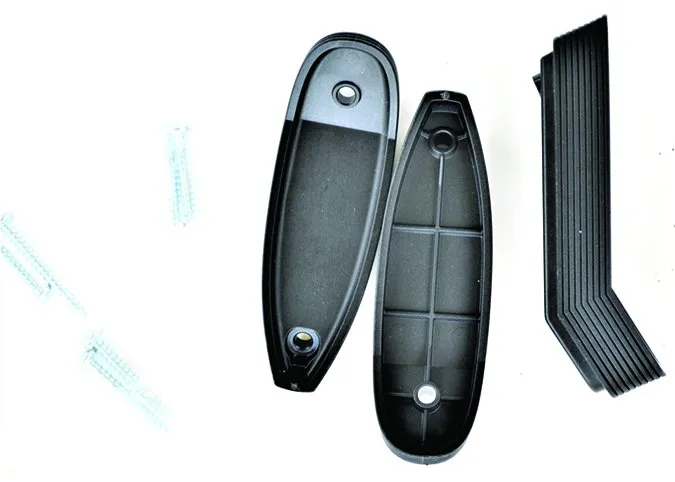
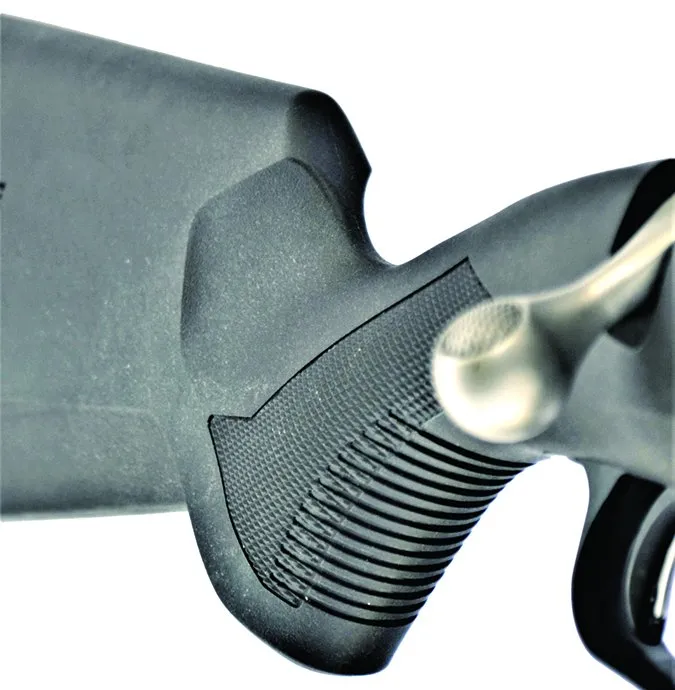
Fired off hand, the rifle felt well balanced and came to the shoulder quickly. Compared to the Savage Axis, the 110 rifle was smoother in operation and seemed more positive in feeding. There were no failures to feed, chamber, fire, or eject of any type.
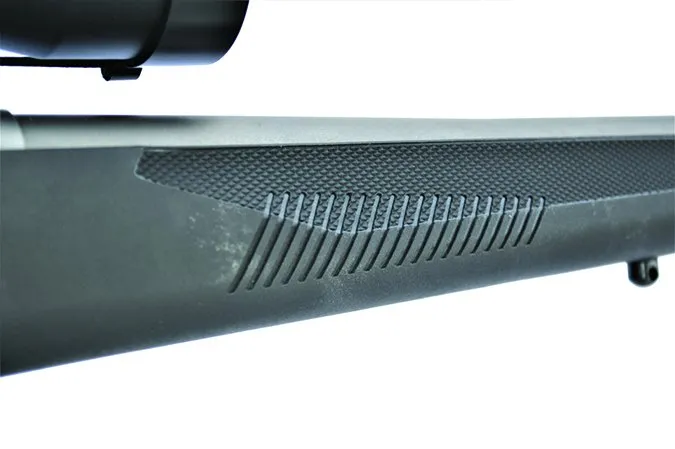
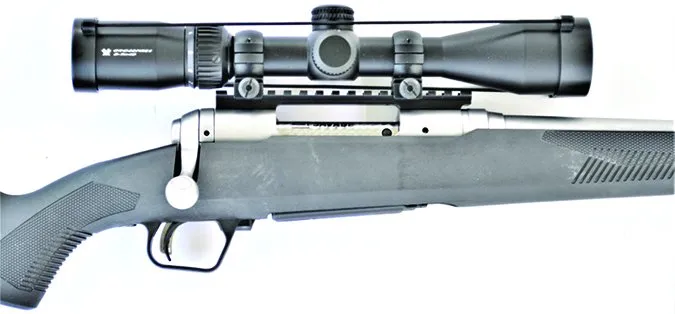
Our Team Said: We found the Axis handled well, but we like the Savage 110 Storm and rate it a better handling rifle, due mainly to the thicker wrist in the stock. After firing both Savage rifles, we think the Savage 110 Storm is worth the extra money. The Black Hills Gold got within 0.4 inches of the Mauser M18’s average group size, and after firing the Mauser rifle and coming back to the Savage, then back to the Mauser to confirm, we like the Savage rifle better, despite its lesser accuracy. The 6.5 Creedmoor is well balanced, accurate, light recoiling, and will prove to be economical with handloads. Factory ammunition is affordable, with a bit of research.
Mauser M18 M18065P 6.5 Precision Rifle Cartridge (PRC), $628
GUN TESTS GRADE: A-
The Mauser is accurate and reliable. The action is smooth enough, but no smoother than the Savage Axis. The rifle is very accurate, but expensive compared to the others.

| ACTION TYPE | Bolt, push feed, three locking lugs, 60-degree lift |
| OVERALL LENGTH | 43.5 in. |
| HEIGHT | 24 in. |
| HEIGHT AS TESTED | 5.75 in. |
| WEIGHT UNLOADED | 7 lbs. |
| WEIGHT UNLOADED w/ SCOPE | 8 lbs. |
| WEIGHT LOADED w/ SCOPE | 8.26 lbs. |
| CAPACITY | 5+1 |
| ACTION | Black plasma-nitrided steel |
| BARREL | Black plasma-nitrided steel |
| STOCK | Black polymer, inlays, rubber buttpad |
| STOCK LENGTH OF PULL | 13.75 in. |
| STOCK SLING ATTACHMENTS | 2 |
| TRIGGER PULL WEIGHT | 2.2 lbs., adjustable |
| TRIGGER STYLE | Single stage |
| SAFETY | Three position |
| MAGAZINE | 4-rd. detachable, polymer |
| MAGAZINE RELEASE | Ambidextrous, front of magazine |
| BOLT RELEASE | Receiver latch |
| SIGHTS | None |
| WARRANTY | 10 year |
| TELEPHONE | (210) 377-2527 |
| WEBSITE | Mauser.com |
| MADE IN | Germany |

This was a recent price as ImpactGuns.com. We paired the rifle with a Minox ZL3 4-12×40 scope, $240 at OpticsPlanet.com, making the total package $868. The Mauser M18 is the newest rifle tested, introduced at the 2018 SHOT show and chambered in 6.5 PRC in 2019. This is the most expensive rifle-and-scope combination tested by several hundred dollars. Looked at another way, you could purchase both Savage rifles for just over $100 extra.
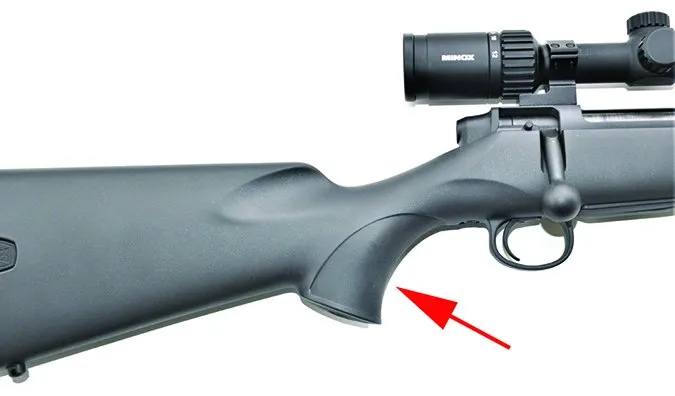
Mauser calls this the People’s Rifle. The rifle is fairly inexpensive due to the use of modern manufacturing operations, turned on a lathe rather than milled, according to Mauser. The action is relatively short, with a 60-degree lift and three integral locking lugs. The bedding and tang screws are tightly fixed into the receiver, making for a rigid action. Countersunk nuts holds these bolts. We like the three-position safety. It is mounted on the right side of the receiver, unlike the Savage, which uses a tang-mounted safety. The rear positions are Safe and bolt locked and Safe and bolt unlocked. The third position is Fire. We like the system used in the Savage 110 better. The Mauser safety is positive in operation, but it is not as handy as the Savage tang-mounted safety, in our opinion.
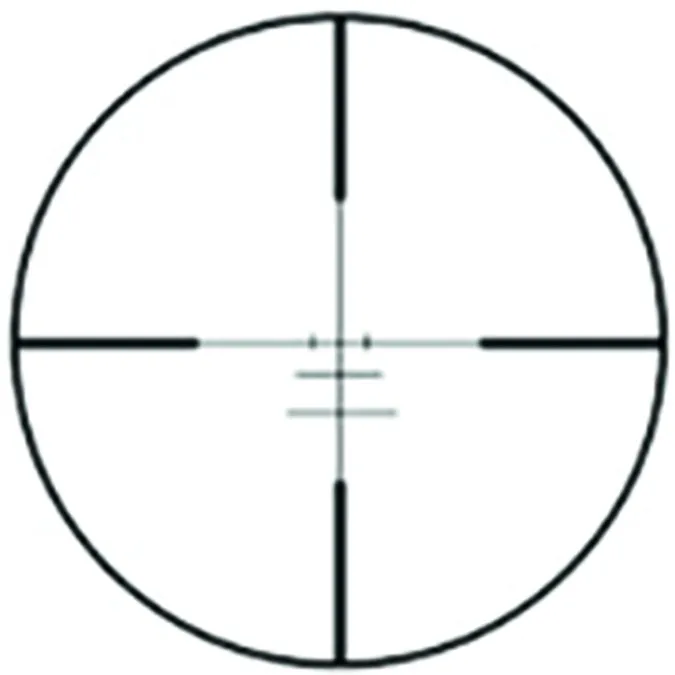
As on the Savage 110, we like being able to load the rifle with the safety engaged, which is also possible with the Axis, but with the Savage 110 and Mauser 18 rifles, you also have the option of locking the bolt. The bolt had a kind of swooshing sound when worked during dry fire. All the raters noticed the sound, yet the safety was silent in operation. You will not spook a deer when operating any of the safeties tested.
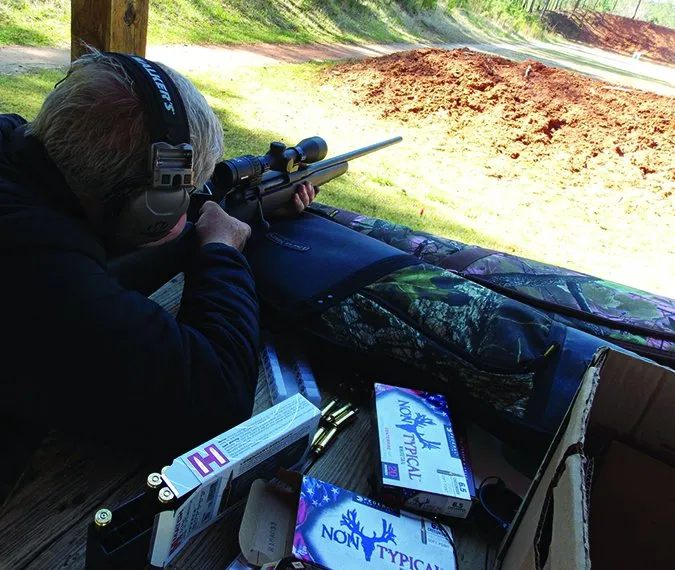
The stock is a nicely molded unit that felt good in the hand and offered good balance. While pebbling is slight, the stock always felt secure due to the design. The stock features a compartment in the rear that is accessed by pressing in tabs on the buttplate. We were neutral on this feature and see little real value.
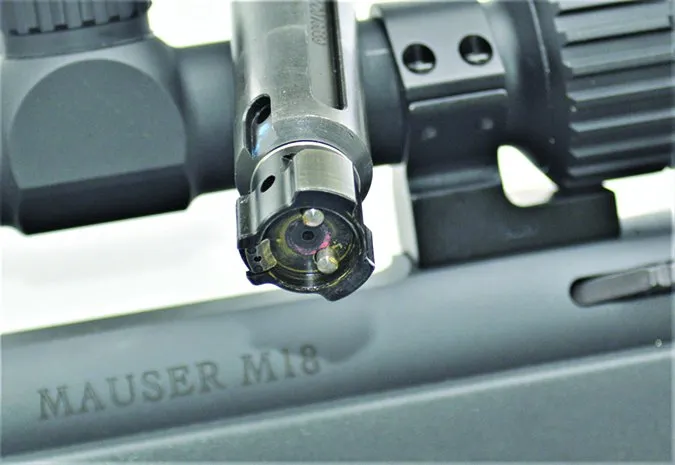
Since the Minox optic is offered under the Mauser/SIG Sauer umbrella, we felt it was a good match for the Mauser rifle. The optics are clear, and while this isn’t an expensive scope, it offers a good sight picture. Adjusting the scope’s zero was easy enough. We especially like the power-adjustment knob’s operation and the ability to firmly control the power adjustment ring. We liked the higher range of 4-12 power better than the 3-9 power scopes of the other two scope-mounted rifles. However, there is probably no need for extra power in most cases. We preferred the Minox slightly over the Vortex scope mounted on the Savage 110 Storm and more strongly over the Weaver scope mounted on the Savage Axis rifle. The Minox plex rifle scope averaged about $80 more than the Vortex scope, so you pay for the extra magnification. The Vortex is perfectly acceptable in an economy rifle.
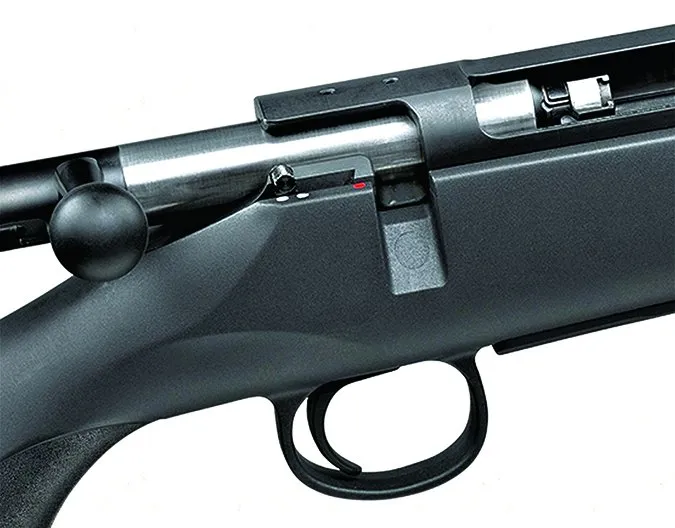
The Mauser’s trigger action was excellent straight out of the box. Trigger compression was 2.3 pounds on the Lyman Electronic trigger gauge. There was no creep or backlash. When firing the first few cartridges, we encountered an odd difficulty. Attempting to chamber the Hornady 6.5 PRC cartridge proved impossible. The cartridge chambered to an extent, but the bolt would not turn down. We felt that this was linked to the dual ejectors in the bolt face. Spring pressure is strong. The bolt was retracted and the chambered cartridge shaken out of the chamber. The next cartridge was similarly tight, but the bolt was closed with some effort and fired normally. The bolt throw on ejection was not difficult. The next round was difficult to chamber, but by the fifth cartridge the rifle was operating normally. The bolt was tight, but presented no problem in operation after the break-in period. However, the bolt worked best when worked briskly rather than slowly.
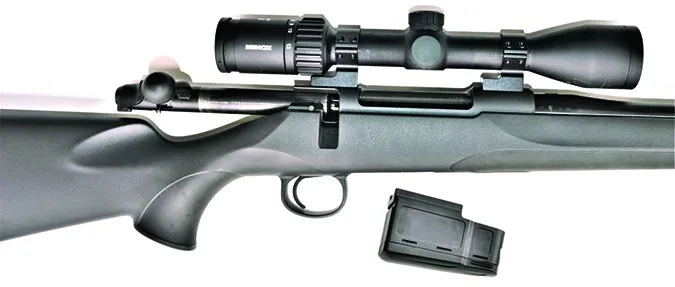
The Mauser proved very accurate. Firing for accuracy at 100 yards, the rifle placed three bullets into 0.6-, 0.8-, and 0.75-inch groups, easily besting the other rifles. While the 6.5 Precision Rifle Cartridge offers a solid 250 fps more velocity than the 6.5 Creedmoor, we did not feel that recoil was noticeably greater. The Mauser rifle’s overwhelming strong point is accuracy.
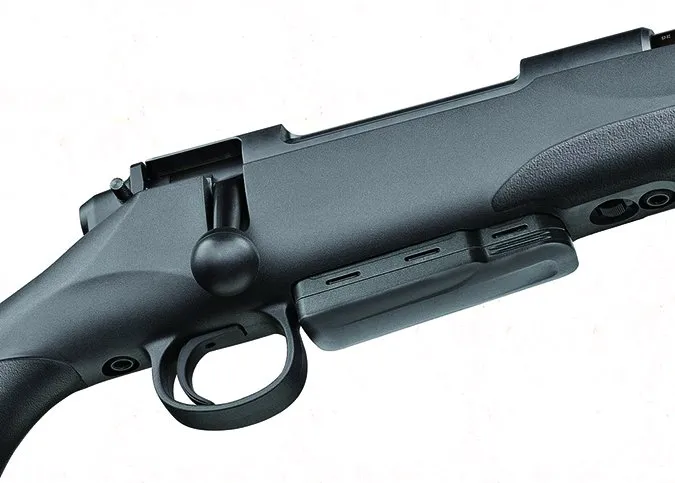
After firing the rifle from the bench, we fired four magazines, 20 rounds, off hand. The rifle isn’t as fast in handling as the Savage rifles, nor the Swede, but it did not present a great difficulty. In the end, we felt that the Mauser is a good rifle, one that demonstrates excellent accuracy, and which features one of the finest out-of-the-box rifle triggers we have ever tested. But it isn’t the best choice for most riflemen, we believe. The 6.5 PRC cartridge’s accuracy has been ably demonstrated in the Mauser rifle and its power as well. With the right load and bullet, this cartridge has an edge over the 6.5 Creedmoor. A shooter with this rifle and the 6.5 PRC will be able to add considerable range compared to the Savage rifles.
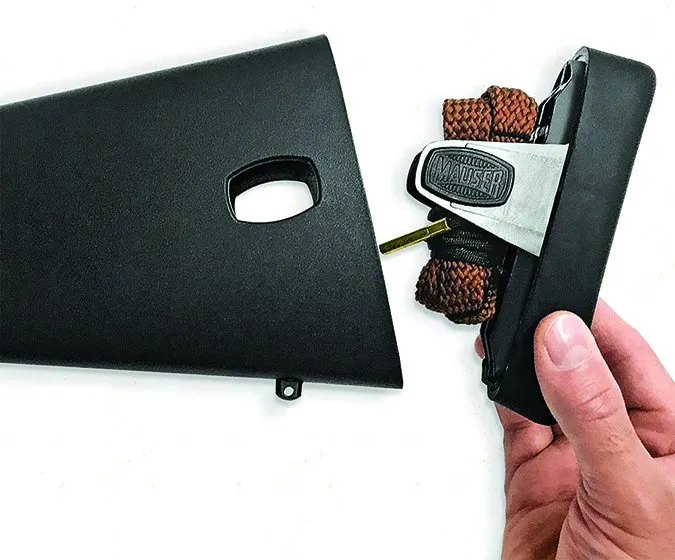
But that’s not the end of the story.
At Gun Tests, we look at every practical consideration. When we ordered the Mauser M18, it arrived promptly. Ammunition was another matter. The primary rater lives in a county with more than a half million people. Within 20 miles of his home are several gun shops and pawn shops that stock ammunition. He estimated that there were more than 100 boxes of 6.5 Creedmoor on the shelves of the shops he frequents, but not a single round of 6.5 PRC in the county. Neither did any of the distributors these shops use have a box in stock in February 2019.
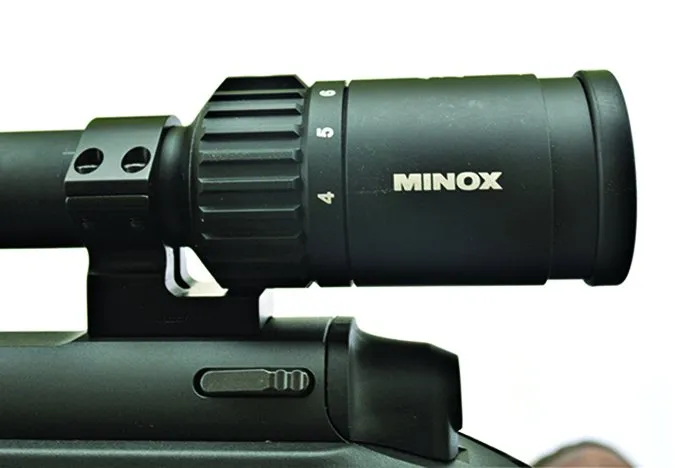
Our Team Said: The Mauser M18 was clearly the class of the field. A sub-minute-of-angle rifle with a sub-2.5-pound trigger out of the box is hard to argue with. We could ding it for the stiff bolt, which worked itself out, and we prefer the safety location of the Savage. But, really, this is a Grade A rifle based strictly on performance. Time will tell if the 6.5 PRC sticks as well as the 6.5 Creedmoor. Also, this rifle, as a package, was much more costly than the others.
Written and photographed by Gun Tests Staff, using evaluations from Gun Tests team testers.






